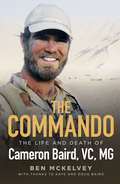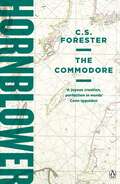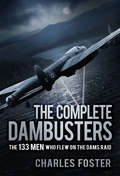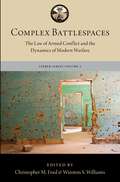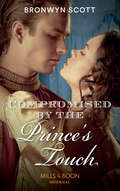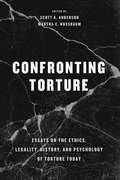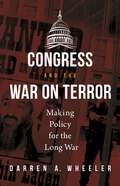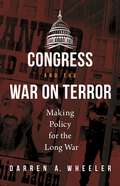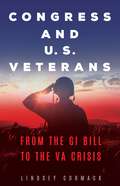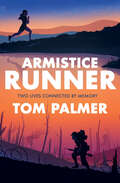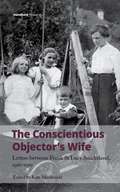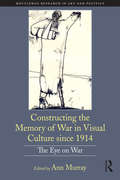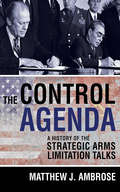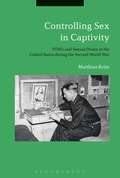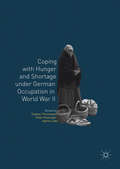- Table View
- List View
The Commando: The life and death of Cameron Baird, VC, MG
by Ben Mckelvey'Corporal Baird was a modern-day warrior who set a standard that every soldier aspires to achieve.' - GENERAL DAVID HURLEYOn 22 June 2013, Corporal Cameron Baird was a 2nd Commando Regiment Special Forces soldier when he led his platoon into a known Taliban stronghold to back-up another Australian unit under heavy fire. In the pronged firefight, Cameron was mortally wounded. In 2014, Cameron's bravery and courage under fire saw him posthumously awarded the 100th Victoria Cross, our highest award possible for bravery in the presence of the enemy. Cameron Baird died how he lived - at the front, giving it his all, without any indecision. He will forever be remembered by his mates and the soldiers he served with in the 2nd Commando Regiment. THE COMMANDO reveals Cameron's life, from young boy and aspiring AFL player, who only missed out on being drafted because of injury, to exemplary soldier and leader. Cameron's story and that of 4RAR and 2nd Commando personifies the courage and character of the men and women who go to war and will show us the good man we have lost.
The Commodore: Flying Colours, The Commodore, Lord Hornblower, Hornblower In The West Indies (A Horatio Hornblower Tale of the Sea #9)
by C. S. Forester1812 and the fate of Europe lies in the hands of newly appointed Commodore Hornblower . . . Dispatched to northern waters to protect Britain's Baltic interests, Horatio Hornblower must halt the advance of Napoleon's empire into Sweden and Russia. But first he must battle the terrible Baltic weather: fog, snow and icebound waterways; overcome Russian political and commercial intrigues; avoid the seductive charms of royalty as well as the deadly reach of assassins in the imperial palace; and contend with hostile armies and French privateers. With the fate of Europe balanced on a knife edge, the responsibility lies heavy on a Commodore's shoulders . . .This is the eighth of eleven books chronicling the adventures of C. S. Forester's inimitable nautical hero, Horatio Hornblower.
The Complete Dambusters: The 133 Men Who Flew on the Dams Raid
by Charles FosterOn 16 May 1943, nineteen Lancaster aircraft from the RAF’s 617 Squadron set off to attack the great dams in the industrial heart of Germany. Flying at a height of 60ft, they dropped a series of bombs which bounced across the water and destroyed two of their targets, thereby creating a legend. The one-off operation combined an audacious method of attack, technically brilliant flying and visually spectacular results. But while the story of Operation Chastise is well known, most of the 133 ‘Dambusters’ who took part in the Dams Raid have until now been just names on a list. They came from all parts of the UK and the Commonwealth and beyond, and each of them was someone’s son or brother, someone’s husband or father. This is the first book to present their individual stories and celebrate their skill, heroism and, for many, sacrifice.
The Complete Flying Officer X Stories
by H. E. BatesAt thirty-four, H.E. Bates was deemed too old for active service in WWII. But as a successful author, was commissioned by the nascent RAP Public Relations unit to publicise the bravery of the fighter pilots. Bates was posted to Oakington and Tangmere air bases where, over drinks with the pilots, he gathered their stories and wrote them as Flying Officer X.The stories convey the pilots' personal qualities and the forces that motivated them. They blend the action and suspense of aerial battles, the tragedy of friendships cut off too soon, and life enduring against all odds.Collected into one volume for the first time, along with five previously unpublished stories from the era, this is a remarkable collection.Includes an introduction by Patrick Bishop, bestselling author of Bomber Boys: Fighting Back 1940-1945
Complex Battlespaces: The Law of Armed Conflict and the Dynamics of Modern Warfare (The Lieber Studies Series)
by Michael N. Schmitt, Lieutenant Colonel Shane R. Reeves, Lieutenant Colonel Christopher M. Ford and Lieutenant Colonel Winston S. WilliamsThe conduct of warfare is constantly shaped by new forces that create complexities in the battlespace for military operations. As the nature of how and where wars are fought changes, new challenges to the application of the extant body of international law that regulates armed conflicts arise. This inaugural volume of the Lieber Studies Series seeks to address several issues in the confluence of law and armed conflict, with the primary goal of providing the reader with both academic and practitioner perspectives. Featuring chapters from world class scholars, policymakers and other government officials; military and civilian legal practitioners; and other thought leaders, together they examine the role of the law of armed conflict in current and future armed conflicts around the world. Complex Battlespaces also explores several examples of battlespace dynamics through four "lenses of complexity": complexity in legal regimes, governance, technology, and the urbanization of the battlefield.
Compromised By The Prince’s Touch: His Convenient Marchioness Compromised By The Prince's Touch The Captain's Disgraced Lady (Russian Royals of Kuban #1)
by Bronwyn ScottAn irresistible royal seduction… Daring Prince Nikolay Baklanov feels London is worlds away from his life of battle and revolution in Kuban. But then the Russian ambassador’s daughter, beautiful Klara Grigorieva, approaches him with her father’s dangerous proposition…
Confronting Torture: Essays on the Ethics, Legality, History, and Psychology of Torture Today
Torture has lately become front page news, featured in popular movies and TV shows, and a topic of intense public debate. It grips our imagination, in part because torturing someone seems to be an unthinkable breach of humanity—theirs and ours. And yet, when confronted with horrendous events in war, or the prospect of catastrophic damage to one’s own country, many come to wonder whether we can really afford to abstain entirely from torture. Before trying to tackle this dilemma, though, we need to see torture as a multifaceted problem with a long history and numerous ethical and legal aspects. Confronting Torture offers a multidisciplinary investigation of this wrenching topic. Editors Scott A. Anderson and Martha C. Nussbaum bring together a diversity of scholars to grapple with many of torture’s complexities, including: How should we understand the impetus to use torture? Why does torture stand out as a particularly heinous means of war-fighting? Are there any sound justifications for the use of torture? How does torture affect the societies that employ it? And how can we develop ethical or political bulwarks to prevent its use? The essays here resist the temptation to oversimplify torture, drawing together work from scholars in psychology, history, sociology, law, and philosophy, deepening and broadening our grasp of the subject. Now, more than ever, torture is something we must think about; this important book offers a diversity of timely, constructive responses on this resurgent and controversial subject.
Confronting Torture: Essays on the Ethics, Legality, History, and Psychology of Torture Today
by Scott Anderson Martha C. NussbaumTorture has lately become front page news, featured in popular movies and TV shows, and a topic of intense public debate. It grips our imagination, in part because torturing someone seems to be an unthinkable breach of humanity—theirs and ours. And yet, when confronted with horrendous events in war, or the prospect of catastrophic damage to one’s own country, many come to wonder whether we can really afford to abstain entirely from torture. Before trying to tackle this dilemma, though, we need to see torture as a multifaceted problem with a long history and numerous ethical and legal aspects. Confronting Torture offers a multidisciplinary investigation of this wrenching topic. Editors Scott A. Anderson and Martha C. Nussbaum bring together a diversity of scholars to grapple with many of torture’s complexities, including: How should we understand the impetus to use torture? Why does torture stand out as a particularly heinous means of war-fighting? Are there any sound justifications for the use of torture? How does torture affect the societies that employ it? And how can we develop ethical or political bulwarks to prevent its use? The essays here resist the temptation to oversimplify torture, drawing together work from scholars in psychology, history, sociology, law, and philosophy, deepening and broadening our grasp of the subject. Now, more than ever, torture is something we must think about; this important book offers a diversity of timely, constructive responses on this resurgent and controversial subject.
Confronting Torture: Essays on the Ethics, Legality, History, and Psychology of Torture Today
by Scott A. Anderson Martha C. NussbaumTorture has lately become front page news, featured in popular movies and TV shows, and a topic of intense public debate. It grips our imagination, in part because torturing someone seems to be an unthinkable breach of humanity—theirs and ours. And yet, when confronted with horrendous events in war, or the prospect of catastrophic damage to one’s own country, many come to wonder whether we can really afford to abstain entirely from torture. Before trying to tackle this dilemma, though, we need to see torture as a multifaceted problem with a long history and numerous ethical and legal aspects. Confronting Torture offers a multidisciplinary investigation of this wrenching topic. Editors Scott A. Anderson and Martha C. Nussbaum bring together a diversity of scholars to grapple with many of torture’s complexities, including: How should we understand the impetus to use torture? Why does torture stand out as a particularly heinous means of war-fighting? Are there any sound justifications for the use of torture? How does torture affect the societies that employ it? And how can we develop ethical or political bulwarks to prevent its use? The essays here resist the temptation to oversimplify torture, drawing together work from scholars in psychology, history, sociology, law, and philosophy, deepening and broadening our grasp of the subject. Now, more than ever, torture is something we must think about; this important book offers a diversity of timely, constructive responses on this resurgent and controversial subject.
Confronting Torture: Essays on the Ethics, Legality, History, and Psychology of Torture Today
by Scott A. Anderson Martha C. NussbaumTorture has lately become front page news, featured in popular movies and TV shows, and a topic of intense public debate. It grips our imagination, in part because torturing someone seems to be an unthinkable breach of humanity—theirs and ours. And yet, when confronted with horrendous events in war, or the prospect of catastrophic damage to one’s own country, many come to wonder whether we can really afford to abstain entirely from torture. Before trying to tackle this dilemma, though, we need to see torture as a multifaceted problem with a long history and numerous ethical and legal aspects. Confronting Torture offers a multidisciplinary investigation of this wrenching topic. Editors Scott A. Anderson and Martha C. Nussbaum bring together a diversity of scholars to grapple with many of torture’s complexities, including: How should we understand the impetus to use torture? Why does torture stand out as a particularly heinous means of war-fighting? Are there any sound justifications for the use of torture? How does torture affect the societies that employ it? And how can we develop ethical or political bulwarks to prevent its use? The essays here resist the temptation to oversimplify torture, drawing together work from scholars in psychology, history, sociology, law, and philosophy, deepening and broadening our grasp of the subject. Now, more than ever, torture is something we must think about; this important book offers a diversity of timely, constructive responses on this resurgent and controversial subject.
Confronting Torture: Essays on the Ethics, Legality, History, and Psychology of Torture Today
by Scott A. Anderson Martha C. NussbaumTorture has lately become front page news, featured in popular movies and TV shows, and a topic of intense public debate. It grips our imagination, in part because torturing someone seems to be an unthinkable breach of humanity—theirs and ours. And yet, when confronted with horrendous events in war, or the prospect of catastrophic damage to one’s own country, many come to wonder whether we can really afford to abstain entirely from torture. Before trying to tackle this dilemma, though, we need to see torture as a multifaceted problem with a long history and numerous ethical and legal aspects. Confronting Torture offers a multidisciplinary investigation of this wrenching topic. Editors Scott A. Anderson and Martha C. Nussbaum bring together a diversity of scholars to grapple with many of torture’s complexities, including: How should we understand the impetus to use torture? Why does torture stand out as a particularly heinous means of war-fighting? Are there any sound justifications for the use of torture? How does torture affect the societies that employ it? And how can we develop ethical or political bulwarks to prevent its use? The essays here resist the temptation to oversimplify torture, drawing together work from scholars in psychology, history, sociology, law, and philosophy, deepening and broadening our grasp of the subject. Now, more than ever, torture is something we must think about; this important book offers a diversity of timely, constructive responses on this resurgent and controversial subject.
Confronting Torture: Essays on the Ethics, Legality, History, and Psychology of Torture Today
by Scott A. Anderson Martha C. NussbaumTorture has lately become front page news, featured in popular movies and TV shows, and a topic of intense public debate. It grips our imagination, in part because torturing someone seems to be an unthinkable breach of humanity—theirs and ours. And yet, when confronted with horrendous events in war, or the prospect of catastrophic damage to one’s own country, many come to wonder whether we can really afford to abstain entirely from torture. Before trying to tackle this dilemma, though, we need to see torture as a multifaceted problem with a long history and numerous ethical and legal aspects. Confronting Torture offers a multidisciplinary investigation of this wrenching topic. Editors Scott A. Anderson and Martha C. Nussbaum bring together a diversity of scholars to grapple with many of torture’s complexities, including: How should we understand the impetus to use torture? Why does torture stand out as a particularly heinous means of war-fighting? Are there any sound justifications for the use of torture? How does torture affect the societies that employ it? And how can we develop ethical or political bulwarks to prevent its use? The essays here resist the temptation to oversimplify torture, drawing together work from scholars in psychology, history, sociology, law, and philosophy, deepening and broadening our grasp of the subject. Now, more than ever, torture is something we must think about; this important book offers a diversity of timely, constructive responses on this resurgent and controversial subject.
Congress and the War on Terror: Making Policy for the Long War (Conflict and Today's Congress)
by Darren A. WheelerAs the U.S. government continues the battle against terrorism, Congress—representatives of the people—must develop long-term policies that provide for national security and protect the civil liberties of the American people.Much of the conversation surrounding the War on Terror focuses on presidential power and responses to the president's exercising that power. Often overlooked or downplayed is the role of Congress in directing the outcome of the war. This book illustrates how Congress—in conjunction with the president and the judiciary—has played a key role in laying the foundation for many post-9/11 policies in areas such as surveillance and detention. Instead of arguing that Congress is incapable of making successful counterterrorism policy, Congress and the War on Terror objectively examines what Congress has done in the past to suggest what action may be needed in the future. Covering controversial topics including torture, interrogation, drones, and military tribunals, it shows that only understanding previous decisions will enable Americans to determine what role Congress should play as the United States fights terror.
Congress and the War on Terror: Making Policy for the Long War (Conflict and Today's Congress)
by Darren A. WheelerAs the U.S. government continues the battle against terrorism, Congress—representatives of the people—must develop long-term policies that provide for national security and protect the civil liberties of the American people.Much of the conversation surrounding the War on Terror focuses on presidential power and responses to the president's exercising that power. Often overlooked or downplayed is the role of Congress in directing the outcome of the war. This book illustrates how Congress—in conjunction with the president and the judiciary—has played a key role in laying the foundation for many post-9/11 policies in areas such as surveillance and detention. Instead of arguing that Congress is incapable of making successful counterterrorism policy, Congress and the War on Terror objectively examines what Congress has done in the past to suggest what action may be needed in the future. Covering controversial topics including torture, interrogation, drones, and military tribunals, it shows that only understanding previous decisions will enable Americans to determine what role Congress should play as the United States fights terror.
Congress and U.S. Veterans: From the GI Bill to the VA Crisis (Conflict and Today's Congress)
by Lindsey CormackProviding a compelling look at veterans' policy, this book describes why the Republican party is considered the party for veterans despite the fact that Congressional Democrats are responsible for a greater number of policy initiatives.The United States is home to 21 million veterans, and Veterans' Affairs is the second-largest federal department, with a budget exceeding $119 billion. Many veterans, however, remain under-served. Republicans are seen as veterans' champions, and they send the majority of Congressional constituent communications on veterans' issues, yet they are lead sponsors on only 37 percent of bills considered by the Senate Veterans' Affairs Committee. What accounts for this discrepancy? Drawing on thousands of e-newsletters sent from Congress to constituents, Congress and U.S. Veterans: From the GI Bill to the VA Crisis argues that the distribution of veterans across districts and the Republican Party is based on government spending, which pulls Republican legislators in opposite directions. This eye-opening book offers a history of veterans' programs, highlights legislative leaders and the most pressing policy areas for reform, identifies the issues most often discussed by members of Congress from each party, points out which Congresspeople have acted on veterans' issues and which have not, and offers an analysis of veteran population distribution and legislative policy preferences.
Congress and U.S. Veterans: From the GI Bill to the VA Crisis (Conflict and Today's Congress)
by Lindsey CormackProviding a compelling look at veterans' policy, this book describes why the Republican party is considered the party for veterans despite the fact that Congressional Democrats are responsible for a greater number of policy initiatives.The United States is home to 21 million veterans, and Veterans' Affairs is the second-largest federal department, with a budget exceeding $119 billion. Many veterans, however, remain under-served. Republicans are seen as veterans' champions, and they send the majority of Congressional constituent communications on veterans' issues, yet they are lead sponsors on only 37 percent of bills considered by the Senate Veterans' Affairs Committee. What accounts for this discrepancy? Drawing on thousands of e-newsletters sent from Congress to constituents, Congress and U.S. Veterans: From the GI Bill to the VA Crisis argues that the distribution of veterans across districts and the Republican Party is based on government spending, which pulls Republican legislators in opposite directions. This eye-opening book offers a history of veterans' programs, highlights legislative leaders and the most pressing policy areas for reform, identifies the issues most often discussed by members of Congress from each party, points out which Congresspeople have acted on veterans' issues and which have not, and offers an analysis of veteran population distribution and legislative policy preferences.
Conkers – Armistice Runner (Conkers)
by Tom PalmerTom Palmer celebrates the unsung athletic heroes of the Armistice in a powerful tale of the fell-running messengers on the front-line of war, publishing for the centenary anniversary of the end of WWI.
The Conscientious Objector's Wife: Letters Between Frank and Lucy Sunderland, 1916-1919 (PDF)
by Kate MacdonaldFrank and Lucy Sunderland, English pacifists and fervent supporters of Labour politics and the Garden City movement, were separated in 1916 when Frank was given his prison sentence for being a conscientious objector. They wrote to each other from November 1916 until April 1919, while Frank was incarcerated at Wandsworth and Bedford prisons. Lucy looked after their three children in Letchworth, and earned enough to keep the family afloat by keeping hens, collecting insurance premiums and taking in sewing. This unique collection of letters is important as a working-class record of wartime experience. These letters show how their shared ideology of a socialist pacifism upheld the couple in separation, planning for a better future in a more equal society for all. The letters give contemporary evidence of events on the Letchworth Home Front: spotting airships, food rationing, hearing the London air-raids, the arrival of ‘Spanish flu’ in 1918, and the sufferings of the European civilian populations immediately after the war. For readers interested in the First World War, British politics, the Garden City movement, feminism and women’s emancipation, adult and workers’ education, Quakerism and pacifism
Constructing the Memory of War in Visual Culture since 1914: The Eye on War (Routledge Research in Art and Politics)
by Ann MurrayThis collection provides a transnational, interdisciplinary perspective on artistic responses to war from 1914 to the present, analysing a broad selection of the rich, complex body of work which has emerged in response to conflicts since the Great War. Many of the creators examined here embody the human experience of war: first-hand witnesses who developed a unique visual language in direct response to their role as victim, soldier, refugee, resister, prisoner and embedded or official artist. Contributors address specific issues relating to propaganda, wartime femininity and masculinity, women as war artists, trauma, the role of art in soldiery, memory, art as resistance, identity and the memorialisation of war.
Constructing the Memory of War in Visual Culture since 1914: The Eye on War (Routledge Research in Art and Politics)
by Ann MurrayThis collection provides a transnational, interdisciplinary perspective on artistic responses to war from 1914 to the present, analysing a broad selection of the rich, complex body of work which has emerged in response to conflicts since the Great War. Many of the creators examined here embody the human experience of war: first-hand witnesses who developed a unique visual language in direct response to their role as victim, soldier, refugee, resister, prisoner and embedded or official artist. Contributors address specific issues relating to propaganda, wartime femininity and masculinity, women as war artists, trauma, the role of art in soldiery, memory, art as resistance, identity and the memorialisation of war.
The Control Agenda: A History of the Strategic Arms Limitation Talks
by Matthew J. AmbroseThe Control Agenda is a sweeping account of the history of the Strategic Arms Limitation Talks (SALT), their rise in the Nixon and Ford administrations, their downfall under President Carter, and their powerful legacies in the Reagan years and beyond.Matthew Ambrose pays close attention to the interplay of diplomacy, domestic politics, and technology, and finds that the SALT process was a key point of reference for arguments regarding all forms of Cold War decision making. Ambrose argues elite U.S. decision makers used SALT to better manage their restive domestic populations and to exert greater control over the shape, structure, and direction of their nuclear arsenals.Ambrose also asserts that prolonged engagement with arms control issues introduced dynamic effects into nuclear policy. Arms control considerations came to influence most areas of defense decision making, while the measure of stability SALT provided allowed the examination of new and potentially dangerous nuclear doctrines. The Control Agenda makes clear that verification and compliance concerns by the United States prompted continuous reassessments of Soviet capabilities and intentions; assessments that later undergirded key U.S. policy changes toward the Soviet Union. Through SALT’s many twists and turns, accusations and countercharges, secret backchannels and propaganda campaigns the specter of nuclear conflict loomed large.
Controlling Sex in Captivity: POWs and Sexual Desire in the United States during the Second World War
by Matthias ReissControlling Sex in Captivity is the first book to examine the nature, extent and impact of the sexual activities of Axis prisoners of war in the United States during the Second World War. Historians have so far interpreted the interactions between captors and captives in America as the beginning of the post-war friendship between the United States, Germany and Italy. Matthias Reiss argues that this paradigm is too simplistic. Widespread fraternisation also led to sexual relationships which created significant negative publicity, and some Axis POWs got caught up in the U.S. Army's new campaign against homosexuals.By focusing on the fight against fraternisation and same-sex activities, this study treads new ground. It stresses that contact between captors and captives was often loaded with conflict and influenced by perceptions of gender and race. It highlights the transnational impact of fraternisation and argues that the prisoners' sojourn in the United States also influenced American society by fuelling a growing concern about social disintegration and sexual deviancy, which eventually triggered a conservative backlash after the war.
Coping with Hunger and Shortage under German Occupation in World War II
by Tatjana Tönsmeyer Peter Haslinger Agnes LabaThis volume demonstrates how German expansion in the Second World War II led to shortages, of food and other necessities including medicine, for the occupied populations, causing many to die from severe hunger or starvation. While the various chapters look at a range of topics, the main focus is on the experiences of ordinary people under occupation; their everyday life, and how this quickly became dominated by the search for supplies and different strategies to fight scarcity. The book discusses various such strategies for surviving increasingly catastrophic circumstances, ranging from how people dealt with rationing systems, to the use of substitute products and recycling, barter, black-marketeering and smuggling, and even survival prostitution. In addressing examples from Norway to Greece and from France to Russia, this volume offers the first pan-European perspective on the history of shortage, malnutrition and hunger resulting from the war, occupation, and aggressive German exploitation policies.
Coping with Hunger and Shortage under German Occupation in World War II (PDF)
by Tatjana Tönsmeyer Peter Haslinger Agnes LabaThis volume demonstrates how German expansion in the Second World War II led to shortages, of food and other necessities including medicine, for the occupied populations, causing many to die from severe hunger or starvation. While the various chapters look at a range of topics, the main focus is on the experiences of ordinary people under occupation; their everyday life, and how this quickly became dominated by the search for supplies and different strategies to fight scarcity. The book discusses various such strategies for surviving increasingly catastrophic circumstances, ranging from how people dealt with rationing systems, to the use of substitute products and recycling, barter, black-marketeering and smuggling, and even survival prostitution. In addressing examples from Norway to Greece and from France to Russia, this volume offers the first pan-European perspective on the history of shortage, malnutrition and hunger resulting from the war, occupation, and aggressive German exploitation policies.
